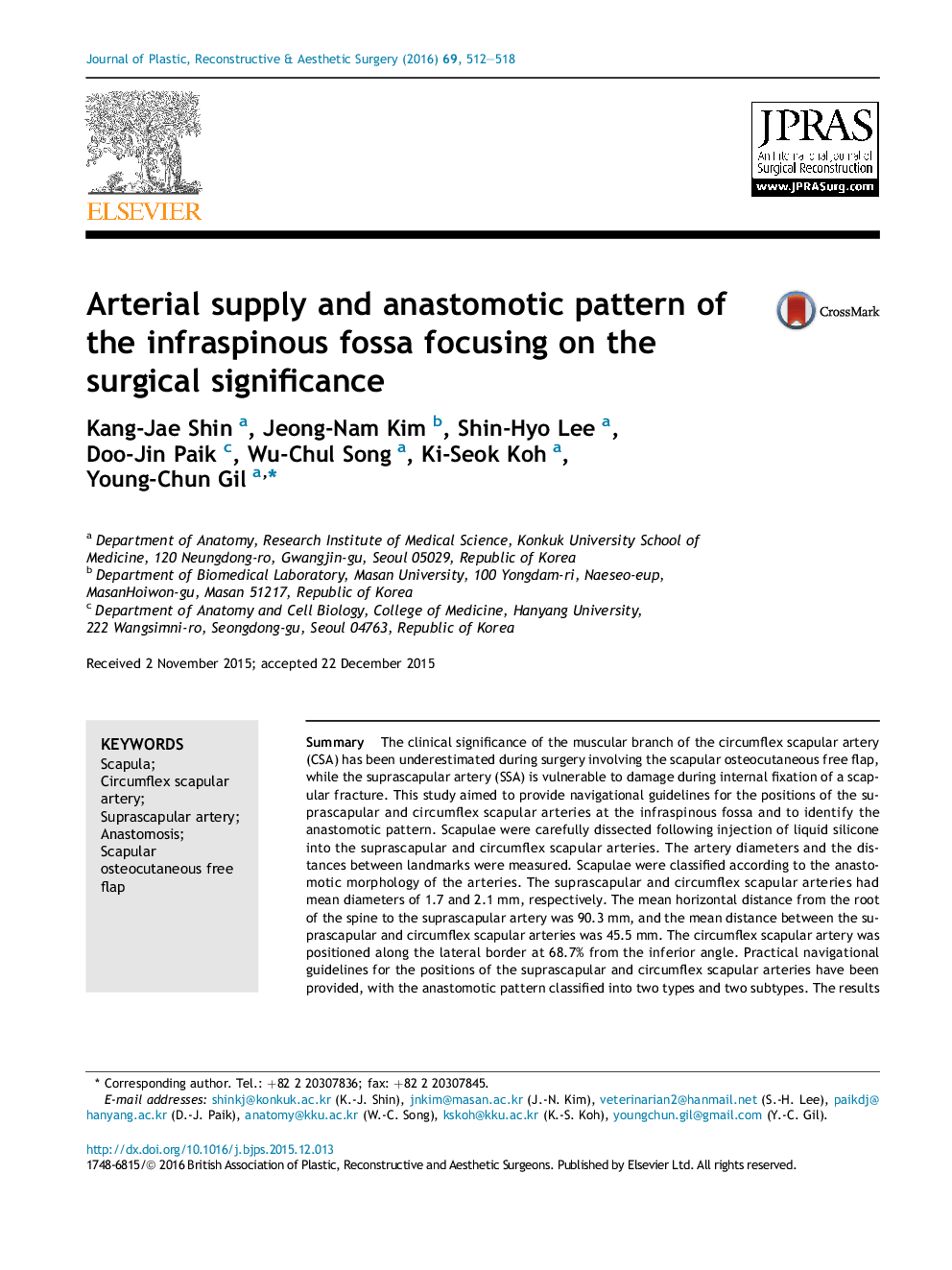| Article ID | Journal | Published Year | Pages | File Type |
|---|---|---|---|---|
| 4117185 | Journal of Plastic, Reconstructive & Aesthetic Surgery | 2016 | 7 Pages |
SummaryThe clinical significance of the muscular branch of the circumflex scapular artery (CSA) has been underestimated during surgery involving the scapular osteocutaneous free flap, while the suprascapular artery (SSA) is vulnerable to damage during internal fixation of a scapular fracture. This study aimed to provide navigational guidelines for the positions of the suprascapular and circumflex scapular arteries at the infraspinous fossa and to identify the anastomotic pattern. Scapulae were carefully dissected following injection of liquid silicone into the suprascapular and circumflex scapular arteries. The artery diameters and the distances between landmarks were measured. Scapulae were classified according to the anastomotic morphology of the arteries. The suprascapular and circumflex scapular arteries had mean diameters of 1.7 and 2.1 mm, respectively. The mean horizontal distance from the root of the spine to the suprascapular artery was 90.3 mm, and the mean distance between the suprascapular and circumflex scapular arteries was 45.5 mm. The circumflex scapular artery was positioned along the lateral border at 68.7% from the inferior angle. Practical navigational guidelines for the positions of the suprascapular and circumflex scapular arteries have been provided, with the anastomotic pattern classified into two types and two subtypes. The results of the present study will help reduce donor-site morbidity and damage to these arteries during surgery in the scapular region.
